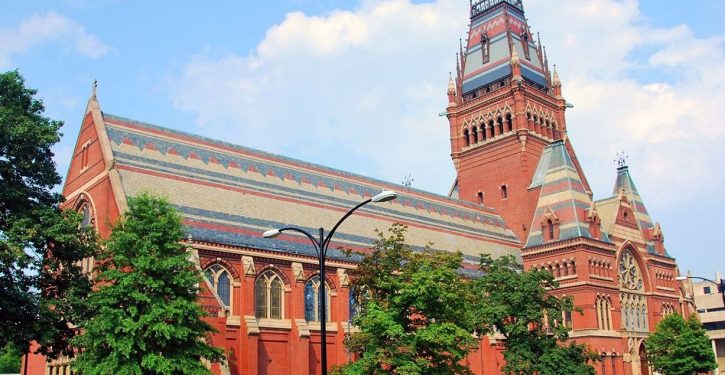
The Supreme Court has just agreed to review a pair of cases that challenge the use of race-based affirmative action in higher-education admissions: Students for Fair Admissions v. President & Fellows of Harvard and Students for Fair Admissions v. University of North Carolina.
These are federal lawsuits brought by a nonprofit membership organization in 2014 alleging that Harvard and UNC’s admissions policies discriminate against Asian-American and white applicants.
After a three-week trial in 2018, a trial court in Boston ruled in Harvard’s favor. The First Circuit Court of Appeals upheld the lower court’s opinion. The case was appealed to the U.S. Supreme Court in February, 2021.
The trial in the UNC case was conducted in November, 2020 with the court ruling in favor of UNC nearly one year later. On November 11, 2021, SFFA petitioned the Supreme Court to grant certiorari before judgment from the U.S. Court of Appeals for the Fourth Circuit so that both the Harvard and UNC cases could be heard together.
Edward Blum, president of SFFA, said, “We are grateful the Supreme Court accepted these important cases for review. It is our hope that the justices will end the use of race as an admissions factor at Harvard, UNC and all colleges and universities.”
Blum added, “Both the Pew Research Center and Gallup have released surveys which indicate that nearly 75% of Americans of all races do not believe race or ethnicity should be a factor in college admissions. In a multi-racial, multi-ethnic nation like ours, the college admissions bar cannot be raised for some races and ethnic groups but lowered for others. Our nation cannot remedy past discrimination and racial preferences with new discrimination and different racial preferences.”
Blum continued, “Harvard and the University of North Carolina have racially gerrymandered their freshman classes in order to achieve prescribed racial quotas. Every college applicant should be judged as a unique individual, not as some representative of a racial or ethnic group.”
Blum concluded, “The cornerstone of our nation’s civil rights laws is the principle that an individual’s race should not be used to help or harm them in their life’s endeavors. We hope the Supreme Court will use these cases to begin the restoration of the colorblind legal covenant that holds together Americans of all races and ethnicities.”
The Louis D. Brandeis Center for Human Rights Under Law (LDB) and the Silicon Valley Chinese Association Foundation (SVCAF) filed an amicus brief with the U.S. Supreme Court in support of Students for Fair Admissions’ (SFFA) petition for certiorari in this case.
Brandeis Center Chairman Kenneth L. Marcus, who once served as Assistant U.S. Secretary of Education for Civil Rights, commented, “The Harvard and North Carolina cases are likely to be the most important affirmative action cases of this generation. The Court needs to understand that the same discriminatory practices and policies that targeted Jewish applicants remain in full force, only now targeting Asian Americans. Just as Jews were routinely excluded from Harvard’s admissions for lacking acceptable ‘character and fitness,’ today Asian candidates are rejected based on the basis of offensive racial stereotypes about ‘leadership,’ ‘likeability,’ and ‘self-confidence.’”
SFFA contended that Harvard’s admissions system imposes higher standards on Asian American applicants on the basis of their race in violation of Title VI of the Civil Rights Act of 1964. The Brandeis Center had urged the Court to hear its challenge, filing a joint brief with the Silicon Valley Chinese Association which demonstrated that Harvard’s admissions plan was developed with the intent of limiting enrollment of Jewish undergraduate students and that it has had the continuing effect of excluding Asian Americans.
The LDB-SVCAF brief contains historical information about profound anti-semitic attitudes at early twentieth-century Harvard, which let to opaque “holistic” admissions processes that have continued to be in use at some selective colleges. The LDB-SVCAF brief argues that Harvard developed much of its long-standing admissions program over a century ago with the specific purpose of limiting the enrollment of Jewish students in a veiled fashion, and that same plan now is being used as a veiled way of limiting Asian American enrollment.
LDB and SVCAF have argued that Harvard is discriminating against Asian American applicants today using the same methods the school devised and used to discriminate against Jewish applicants in the 1920s and 1930s: reducing the percentage of Asian American applicants “based on subjective factors that are examined through the lens of prejudicial assumptions and stereotypes,” as the brief explains.
In 1920, Harvard President A. Lawrence Lowell started a process of intentionally altering the admissions selectivity system to address what Lowell termed the “Jew problem” at Harvard—which consisted of Jewish students comprising more than twenty percent of the student body. Worried that the increasing Jewish population on campus would deter wealthy Protestants from attending Harvard over comparable institutions, Harvard implemented a de facto quota on Jewish enrollment. But “[r]ather than announce an explicit quota on the admission of Jews to reduce Jewish enrollment,” President Lowell devised a plan whereby Harvard could instead “decline admission to a certain number of Jewish applicants who possessed the stereotypical characteristics of Jews.” Harvard did this by utilizing subjective admissions criteria so that only applicants who passed a “character and fitness” analysis were admitted—Jews were routinely deemed to lack the necessary qualities. Thus, as the brief explains, the subjective criterion of “character and fitness” was used “as a pretext for excluding applicants with stereotypical characteristics of Jews.” For decades, Harvard successfully implemented this method to reduce the percentage of Jews in each freshman class to fifteen percent.
As the brief explains: “Just as Harvard used methods in the 1920s and 1930s to identify applicants of sufficient ‘character and fitness’ as a pretext to discriminate against Jews, Harvard’s current use of the ‘personal rating’ to pursue student-body diversity is a pretext to discriminate against Asian Americans.” A hundred years later, Harvard continues to utilize the same discriminatory admissions policies that it devised to clandestinely limit Jewish enrollment to now limit the enrollment of Asian Americans.



